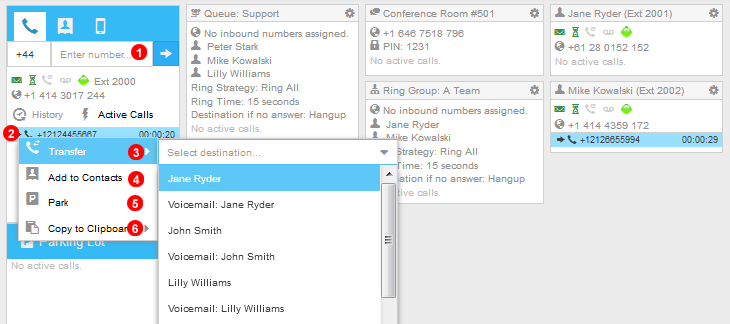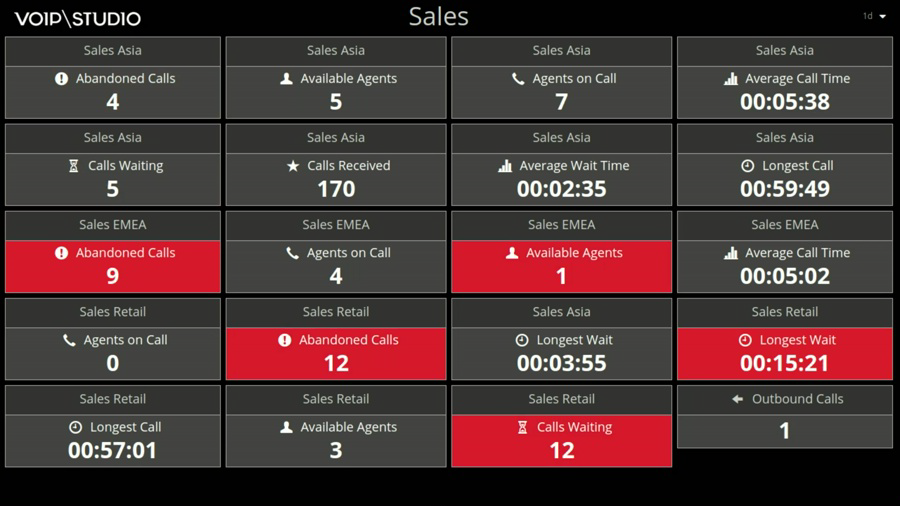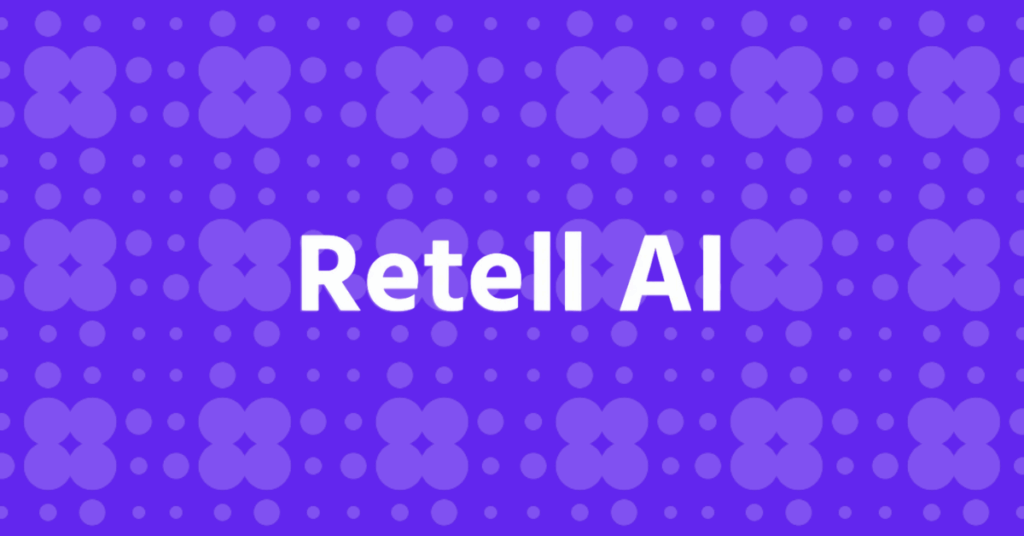
Table of contents
In today’s business landscape, call centers play a pivotal role in the success of many companies. They serve as the primary interface for direct customer communication and are instrumental in building and maintaining solid relationships.
However, effectively managing a call center in an increasingly competitive and customer-centric world presents significant challenges.
One of these challenges is quality control in the call center. This process is a measure of quality assurance and a fundamental pillar in delivering exceptional customer service. Quality control in the context of a modern call center is not an option; it is an imperative necessity.
If you are part of a call center and want to improve the quality of customer service, you must understand and master the implementation of quality control in your call center.
What is quality control in a call center
Quality control in a call center is a systematic and rigorous process designed to ensure that interactions with customers, whether phone calls, online chats, or emails, meet the quality standards set by the company. In other words, it is a set of practices and tools to ensure every customer contact is consistently, professionally, and satisfactorily handled.
Within call centers, quality control encompasses several essential aspects beyond measuring the number of calls answered or the duration of each interaction. It involves a comprehensive assessment of communication quality, problem-solving effectiveness, and, equally important, customer satisfaction.
The importance of ensuring high-quality service
Implementing a robust quality control system in a call center cannot be underestimated. In a highly competitive business environment where customers have a wide range of options and high expectations, service quality has become a determining factor for success. High-quality service fosters customer loyalty and can lead to positive referrals and, ultimately, increased revenue.
Quality control is not just about measuring and correcting poor performance but also a strategic tool for identifying improvement opportunities. By systematically analyzing customer interactions, a call center can identify patterns, trends, and areas where training or process adjustments are needed to deliver an even better service.
Benefits of implementing quality control in the call center
Internal benefits:
- Enhanced efficiency: Quality control can help identify inefficient processes and areas for improvement in call management, increasing operational efficiency.
- Employee motivation: Agents who receive feedback and recognition for their performance tend to be more motivated and engaged.
- Cost reduction: Efficient first-contact resolution can reduce repeat call costs and increase productivity.
External benefits:
- Customer satisfaction: Effective quality control continuously improves customer satisfaction, increasing loyalty and retention.
- Positive reputation: Satisfied customers are likelier to speak positively about the company, contributing to a positive reputation and attracting new customers.
- Customer retention: Quality customer service can foster long-term customer retention and create loyal customers who continue to do business with the company.
Implementing the quality control process in a call center
Successfully implementing quality control in a call center requires a strategic approach and a series of key steps to ensure that the process is effective and beneficial for both the company and the customers.
Implementing quality control is a process that demands commitment, dedication, and a constant focus on improvement. By following these steps and maintaining a long-term commitment to service quality, your call center will be in a solid position to meet and exceed customer expectations.
Here is a detailed guide on how to carry out this important task:
1. Clearly define objectives
The first step is clearly defining the objectives you aim to achieve by implementing quality control in the call center. These objectives should be Specific, Measurable, Achievable, Relevant, and Time-bound (SMART).
Examples of objectives include improving customer satisfaction by a certain percentage or reducing the average call handling time.
2. Design an evaluation framework
Develop a detailed evaluation framework that describes the criteria and standards for measuring quality in customer interactions.
It may include how agents handle inquiries, the accuracy of information provided, and the courtesy in communication.
3. Select a quality control team
It is crucial to appoint a team or a group of experts responsible for the supervision and execution of quality control.
This team should consist of individuals with experience in the call center and customer service quality evaluation.
4. Staff training
Training is essential to ensure that all employees understand the importance of quality control and how it will be carried out. Offer training programs that address quality standards, expectations, and best practices.
5. Develop a monitoring strategy
Establish an ongoing monitoring process for interactions between agents and customers. It may involve call recording, reviewing online chats, or evaluating emails. Monitoring should be objective and focused on predefined criteria.
6. Continuous Evaluation and Feedback
Once interactions have been evaluated, provide feedback to the agents. It should be an ongoing process that highlights areas for improvement and recognizes and celebrates successes.
7. Implementation of corrective actions
If recurring deficiencies are identified in quality control, it is essential to implement corrective actions. It may include additional training, process reviews, or changes in technology.
8. Utilize supporting technology
Technology plays a crucial role in quality control implementation. Use quality management systems and data analytics tools to facilitate the monitoring and evaluation process.
9. Effective communication
Ensure the entire organization is informed about the quality control process and its results. Effective communication ensures everyone is aligned with the objectives and committed to continuous improvement.
10. Measurement of results
Regularly evaluate and measure the results achieved through quality control. Compare key performance indicators (KPIs) before and after implementation to assess the impact on customer satisfaction and operational efficiency.
Key Performance Indicators (KPIs) in call center quality control
Performance measurement is essential for evaluating the effectiveness of quality control in a call center. Tracking and managing these KPIs are crucial for assessing and improving call center performance. Each of these indicators provides valuable information about areas for improvement and success in customer service, enabling informed decision-making and continuous quality improvement.
Here are some of the most relevant KPIs and their importance:
First Contact Resolution (FCR)
FCR measures the call center’s ability to resolve customer queries and issues on the first interaction. A high FCR indicates efficiency and customer satisfaction, as it reduces the need for customers to call back with the same problem.
Average Handling Time (AHT)
AHT represents an agent’s average time on each call. If AHT is excessively long, it may indicate inefficiency. However, balancing speed with service quality is essential, as rushed interactions can lead to dissatisfaction.
Customer Satisfaction (CSAT)
CSAT directly measures customer satisfaction with the service they receive. Customers are asked to rate their experience on a scale, and a high CSAT score indicates high satisfaction.
Net Promoter Score (NPS)
NPS assesses customer loyalty and willingness to recommend the company to others. Customers are categorized as promoters, passives, or detractors. A high NPS indicates satisfied customers who are more likely to refer others.
Abandoned Call Rate
This indicator measures the number of calls customers leave before an agent can attend. A high abandoned call rate can indicate an inability to handle demand or excessively long wait times.
Call Recording Quality
The review of call recordings by quality evaluators is essential. Metrics such as the percentage of quality calls can be used to measure how many interactions meet established standards.
Transfer and Escalation Rate
This indicator measures how often agents need to transfer or escalate calls to a higher level. Many transfers may indicate a need for training or a lack of agent autonomy.
Error and Correction Rate
The quantity of errors in the information provided to customers and the efficiency in correcting those errors are essential indicators. Repeated errors may indicate the need for process improvement or staff training.
Customer Retention
This KPI measures the number of customers who continue to do business with the company over time. High retention is a clear sign of customer satisfaction.
Average Wait Time
Measures how long customers wait before being attended to. Maintaining a reasonable wait time is critical for customer satisfaction.
VoIPstudio: A technological solution for quality control
Technology is crucial in successfully implementing quality control in a call center. Among the numerous available tools, Voice over Internet Protocol (VoIP) is an essential solution with several significant advantages.
Let’s explore how VoIPstudio’s advanced features can facilitate quality control and enhance operational efficiency:
Call recording
VoIP providers allow more efficient and accurate call recording than traditional telephone technologies. Every customer interaction can be securely recorded and stored in a digital platform. These records become a valuable source of data for quality control.
Advantages:
- Easy Access to Recordings: Supervisors and evaluators can quickly and easily access call recordings, making the review and feedback process more efficient.
- Security and Compliance: Call recordings can be securely stored to comply with data privacy regulations and provide evidence in case of disputes or legal issues.
- Identification of Improvement Areas: By listening to real-time interactions, immediate improvement opportunities can be identified and communicated to agents.
Real-Time Monitoring
VoIPstudio offers several useful functions for call center supervisors to assess agent performance and monitor or assist in real-time:
Call Intrusion or Call Barge
Supervisors can listen to conversations as they happen and provide assistance or intervene if necessary. It is beneficial for on-the-job training and managing delicate situations.
Advantages:
- Live quality improvement: Supervisors can provide instant guidance and support to agents to ensure high-quality customer service.
- Immediate problem resolution: If an issue arises during a call, it can be addressed immediately, enhancing customer satisfaction.
- Practical training: Supervisors can use real-time examples to train agents and reinforce best practices.
You can learn how a supervisor can use this functionality by watching the following video:
Supervisor console
In addition, to access the administrator panel for necessary adjustments, the supervisor can access a monitoring panel that allows them to view active calls in each queue and monitor the status of each agent in real-time:
You can find more information in our manual about the VoIPstudio receiving console by clicking on this link, or in the following video:
Call center barometer
VoIPstudio provides a call center barometer that allows you to assess the current state or health of your call center in real-time, facilitating quick decision-making. The barometer also provides for the configuration of alerts and notifications for key values.
In our administrator’s manual you can find all the information about this real-time call monitoring tool.
Satisfaction surveys
VoIPstudio also offers the capability to generate customer satisfaction surveys launched before the call concludes. It allows your customers to rate the call center’s service quality.
You can enable or disable this feature with just a couple of clicks.
Find out more about VoIPstudio’s post call surveys in this blog post.
Call tagging
Labeling calls is crucial for segmentation and tracking. With VoIPstudio’s call center functions, you can tag calls as “Irrelevant,” “Successful Sales,” “Angry Customers,” or any other segmentation you need.
It lets you filter, sort, and categorize your calls for goal-oriented KPIs and reports.
In the following video we tell you how to use call tagging in our platform.
Data analysis and reporting
VoIP enables the collection and in-depth analysis of detailed data on call performance. It includes information on call duration, waiting times, abandonment rates, and call tagging, among many other key data points.
This data can be used to generate reports and analyze trends over time.
Advantages:
- Data-Driven decision-making: Reports generated from VoIP data provide valuable insights for making informed decisions about quality control strategy.
- Pattern identification: By analyzing data, you can identify patterns and trends in call center performance, leading to proactive improvements.
- Resource optimization: Detailed information on operational efficiency helps allocate resources more effectively.
Integration with Leading CRMs
If you already use a CRM system for managing customer communication, VoIPstudio likely integrates with it. It allows automatic call logging or recording within the customer’s profile, providing a clear view of their telephone activity and yielding essential KPIs. You can see whether customer calls are answered and how they are handled from within the CRM.
Custom developments through REST-API and Webhooks
Thanks to VoIPstudio’s webhooks and REST-API, you can develop the automation necessary to streamline processes or gather the most relevant data.
For example, you can use webhook events to log all agents involved in a call and automatically generate an email to evaluate each of them.
Conclusions
In summary, quality control in a call center is more than just a process; it’s a constant commitment to excellence in customer service.
However, it’s not a static process. Continuous improvement is essential. By analyzing data, identifying trends, and providing feedback, a call center can continually evolve to meet changing customer expectations and stay competitive in today’s market.
Contact us if you’re looking for technological solutions to help implement a rigorous quality control system in your call center. One of our technicians will assist you in applying VoIP technology to achieve your goals.
More from the blog
Want to improve your business communication?
Unlock enterprise-class call center power at affordable prices – no hardware, no delays, no surprises!








